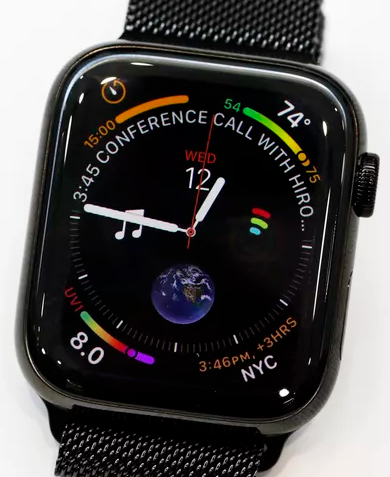If your heart's beating faster, the new Apple Watch Series 4 will be able to tell. The latest Apple Watch packs several new features, with the most obvious change on its surface: a redesigned face to put much more screen on your wrist.
The tech giant on Wednesday unveiled its new Apple Watch Series 4 from the Steve Jobs Theater in its Apple Park headquarters. The new watch has a larger face, and features its own Electrocardiogram and Fall Detection. It'll also have new speakers and a processor chip that boasts much faster speeds for the watch.
It'll start at $399 for the Series 4 model, $499 for the LTE model. Preorders will start on Sept. 14, and the watches will be available on Sept. 21.
The watch's accelerometer and gyroscope has improved so that the watch can now predict if the person wearing it is falling. If there's an accident, the watch can prompt a call to emergency services, for example.
"Fall detection is a feature that we hope you never need but it's really nice to know it's there," Jeff Williams, Apple's chief operating officer said.
The speakers are now also 50 percent louder, while the screen is 30 percent larger. Its new chip, the S4, will have the watch performing twice as fast. With the larger screen, you can have up to 8 shortcuts on the screen for apps. The speakers will now be 50 percent louder for phone calls and interacting with Siri. The battery life boasts 18 hours, and outdoor workout time has increased to 6 hours, Apple said.
The feature that received the most applause in the crowd came in response to the electrocardiogram (ECG or EKG) feature, which allows wearers to have a heart sensor on their wrists.
"The biggest feature add to Watch besides the larger viewable image area was its heart health features, in particular, its ability to perform an ECG and also can detect AFib. Add that to fall detection and notification and I can see kids buying one for their parents and grandparents," Patrick Moorhead, an analyst with Moor Insights & Strategy, said.
It'll come in three colors for its aluminum finish, in silver, gold and space gray. The stainless steel versions have polished black and space black, as well as a new gold color.






